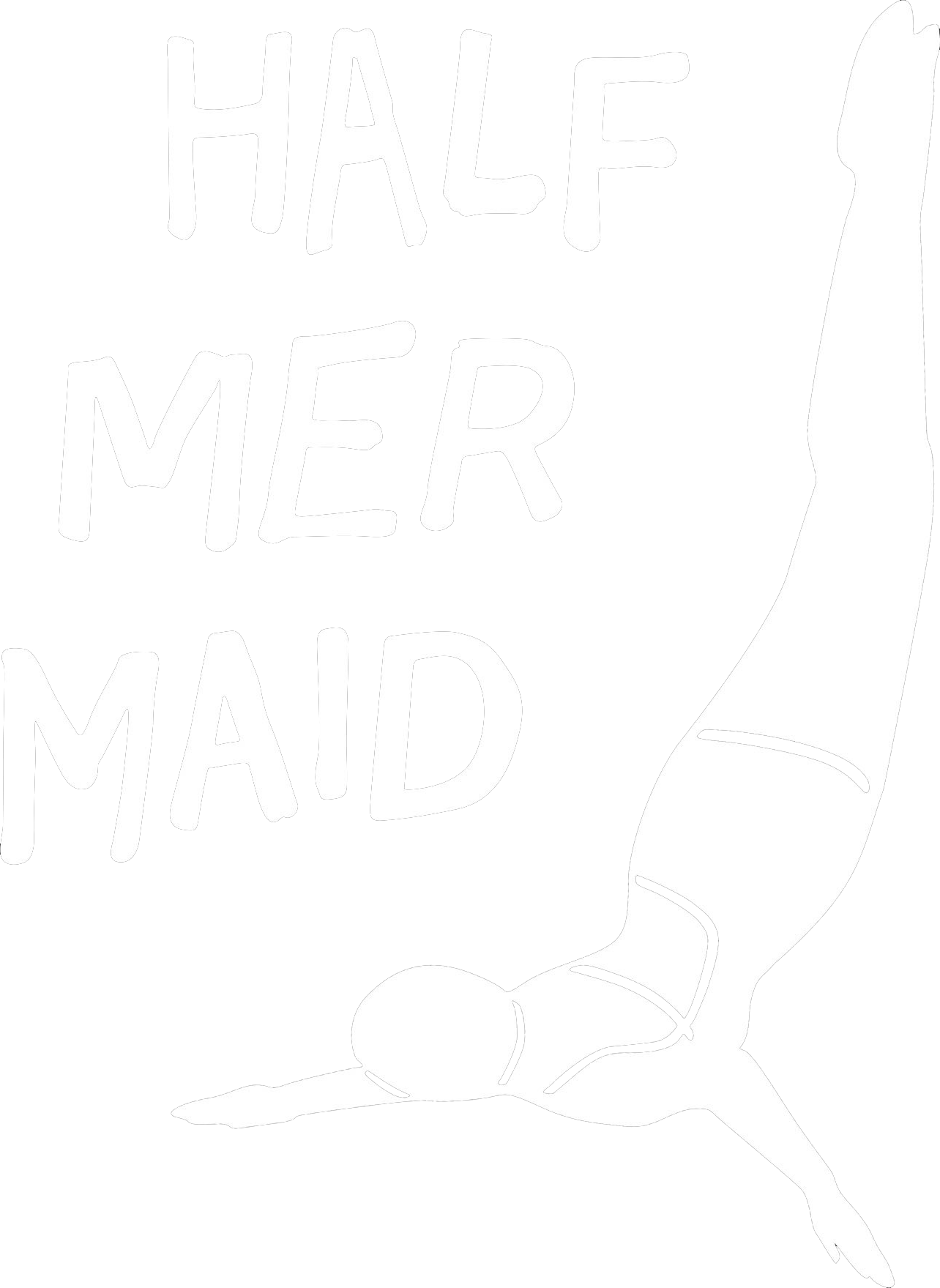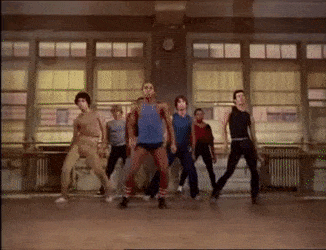
In this edition of our video game production blog, we talk game reviews, livestreaming on Steam, content marketing and more. The following is an edited transcript of a conversation between Natalie Watson (our Associate Producer) and Jeff Petriello (our Producer). Listen to that convo here:
Jeff Petriello: Hello, welcome to the Half Mermaid Production block. I’m Jeff Petriello.
Natalie Watson: And I’m Natalie Watson.
JP: And we are producers at Half Mermaid, a game studio in Brooklyn founded by Sam Barlow. We’re here to talk about what we’re working on and how we work on it.
NW: I love that, it sounds so snappy…
JP: Thank you.
NW: I love this intro for us.
JP: Yeah, we got some feedback that we needed a little intro last time, so that’s our attempt. I hope you like it everyone.
Catching Up
JP: Yeah, so it’s been a month since we recorded our last production blog. How are you doing? What’s going on?
NW: That is really scary that it has been a month. I don’t even know how time has passed like that. I think the last time we talked was pre-my move. And now I have moved, and all of my boxes are here. I’ve just started the unpacking process, and unpacking might be worse than packing, I haven’t decided yet…
JP: Oh, it’s definitely worse than packing. Unquestionable.
NW: With packing, it’s really terrible at the beginning. I was completely suffering for two weeks and then the last day I just started throwing shit in boxes. Now I must find a place for all of that said thrown material, and turns out I should have planned. I should have gotten rid of more stuff. But I’m happy to not be spread across the country and not have my stuff in the transient moving zone. Everything is just in one place so that makes me happy. BIG relief.
JP: Well, yay! I’m happy that you made it there safely. Unpacking is a six-month process. That’s how I look at it. I hope it goes as well for you as possible.
NW: Thank you.
JP: I had some locale updates as well over the course of last month. I decided to stay in Cape Cod in Provincetown for the month of September. I’ve actually never been here for the month of September (they call it Townie Summer here). I’m really hoping to enjoy some nice final beach days on the weekends. This week has been really rainy, but yeah, I’m excited about that. I have planned a few trips. I’m planning on going back to New York this month for my niece’s birthday and a little intra-Cape adventure. I’m gonna spend a day in Martha’s Vineyard and Nantucket. You know I’m a massive Moby Dick fan, so this a pilgrimage for me, personally. I’m really excited about that.
NW: Wow, I’m really looking forward to the next production blog when you can talk to us about these spiritual experiences you’ve had over your maritime travels.
The Power of a Great Game Review
JP: I’m looking forward to it. So yeah, we’re excited to talk about some things that we’ve watched, read, or played recently that left an impression on us, or that can be impacting us in terms of how we’re thinking about our next project. So what have you recently interacted with that’s stuck with you Natalie?
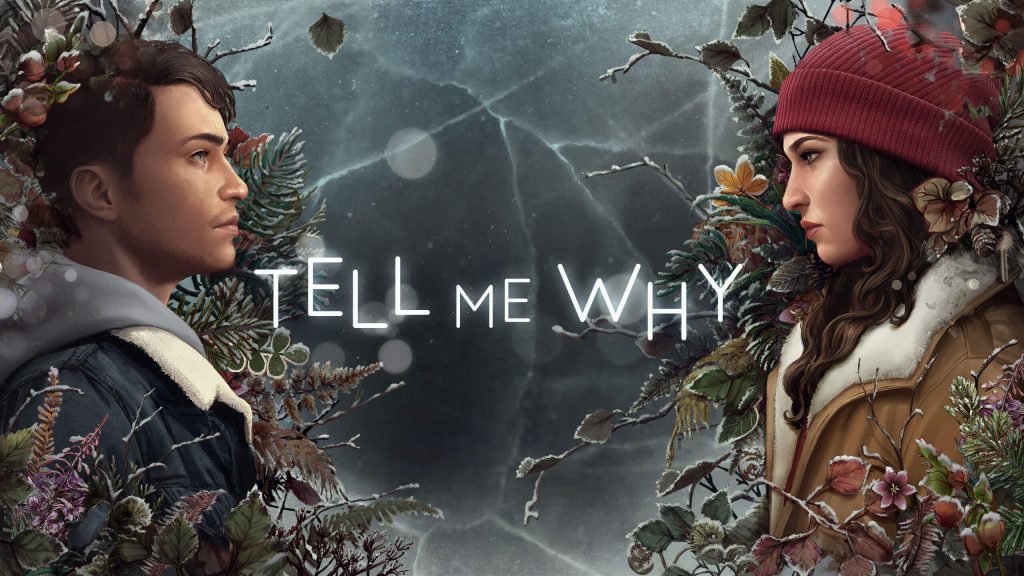
NW: I wanted to give a shout out to Dia Lacina’s Tell Me Why review for VICE Games. Dia is a friend of mine, and also one of the best games critics in the game. I really appreciated her review. She is an incredible writer, first of all, and also has a way of weaving the personal and the interpersonal. She’s great at digging into things and holding games accountable without saying, “just do better.” She really takes people to task for the exact intricacies of representation, the nuances, the complexities, the difficulties in trying to successfully represent or tell a story outside of your own perspective. So I highly recommend if you’re listening to this, to go read it.
She really takes people to task for the exact intricacies of representation, the nuances, the complexities, the difficulties in trying to successfully represent or tell a story outside of your own perspective.
– Natalie on dia lacina
JP: What is the game?
NW: The game is the newest DONTNOD game. They developed Life Is Strange. It tells the story of two twins, Tyler and Alyson, who were separated but reconnect after a decade of being apart. I haven’t played the game myself, but from Dia’s review, Tyler, who is a trans-man, was sent to some sort of correction school for delinquent types. Alyson was adopted by the local Tlingit police chief after their mother died. So it’s about them reconnecting.
What Dia really gets into is representation or recollections of memory: how different people can have memories of the same event that tell two different truths, how to reconcile that, and how complex it is. In a world in which we, as game developers and as players, have been faced with binary choices from the dawn of time, we are conditioned to talk about memory in a binary way. In Tell Me Why, you’re faced with making choices between following one or the other, Tyler or Alyson’s memories. There is a “right” answer in each of those choices, where in reality, both of those memories may have certain truths in them. Dia takes that to task and does an excellent job with it. I really enjoyed reading it this past week.
JP: Yeah, I thought it was an excellent review as well. She has an incredible way of bringing a narrow conversation about a particular game into a larger scope about game design and development in general. She’s pushing us to really think about what we choose to simulate and to ask ourselves: is this an effective and integral way to achieve the type of experience that we want to have?
But yeah, the review itself is a work of art. So, I’m glad that you brought it up.
NW: Totally. Shout out to Dia.
Mysteries on the High Sea (on a Mac)
JP: I’ve been playing the Return of the Obra Dinn by Lucas Pope, which is a game that Sam Barlow, our boss, consistently cites as an inspiration. It’s been really interesting. I didn’t devour it in the same way that I devoured Tacoma in our last conversation.

When I first started Obra Dinn, I started freaking out. I was like, “Oh my God, this is the Melvillian Mac dream. Like, I’m so excited to play this.” There were a lot of really exciting and dramatic reveals right off the bat. But, I really slowed down with it about five hours in. You’re essentially walking around the ship and identifying clues, trying to piece together the identities of every crew member (there’s like 60 of them) in order to fully tell the story of what happens on this very dramatic boat where everyone is dead.
NW: Yeah.
JP: It is a gorgeous and incredible work of art, just in terms of the fact that it’s a solo project. I cannot fathom that. It’s incredible. I’m coming with a deep appreciation of Lucas Pope because Papers, Please, his previous game, is my all-time #1 favorite iPad game.
NW: Wow.
JP: Yes, hands down. I just loved that game. Truly a beautiful example of procedural rhetoric, as my game design teachers would like to say: telling a story through the actual process of going through a system, as opposed to just reading text or seeing something visually happen. That game was really important for me as I was developing a sense of my game design principles, and so I really respect him as a developer. And Obra Dinn is cool, just in terms of tone, and mystery, and environment and aesthetics. It has so much going for it. So I’m really enjoying that.
NW: I’m curious which picture mode you are playing the game in.
JP: Wait, what do you mean?
NW: Well, you can change the video setting. There’s like a Commodore’s 1084 setting. There’s like the original Mac.
JP: Oh, cute.
NW: There are just different colored gradings for each. So I’m curious, did you play around with that at all?
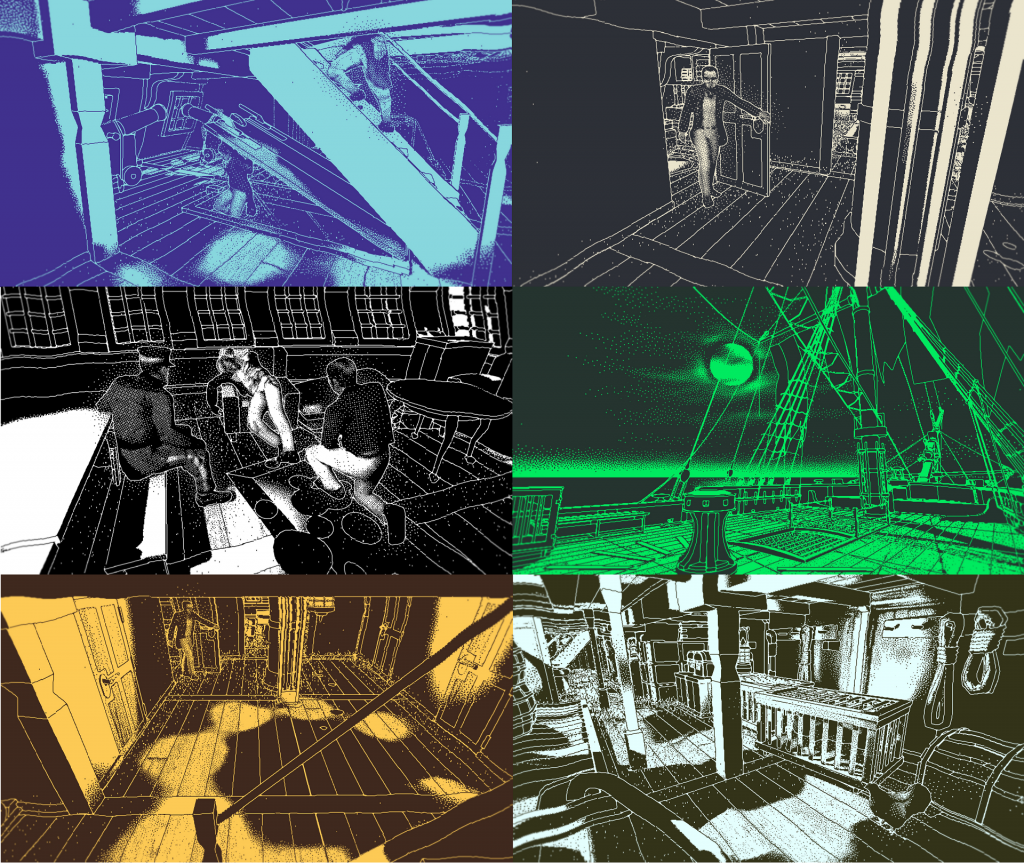
JP: No, I haven’t yet. I have to jump in there. I’m just playing the default, which whatever it is, it’s beautiful.
NW: Okay, yeah. I highly recommend it. I haven’t finished the game yet. I’ve only just started it and haven’t picked it back up again, but I really want to finish that game.
JP: Working for Sam Barlow is interesting because I’m really not a fan of mysteries, or detective stories or anything that he holds so dear.
NW: Like everything Sam loves.
JP: So I am trying to get more into that stuff. This is a good entry point for me because it combines my Moby Dick obsession with the mystery narrative.
NW: Yeah.
Dancing in the Streets of Late 70s NYC
JP: The other thing I wanted to mention that really stuck with me is that I watched Fame, the 1980 Alan Parker film about the New York School of Performing Arts this week. I’d never seen it before. I’ve had a weird Alan Parker summer. In the last Production Blog, I brought up watching Evita, which is another Alan Parker film.
NW: Yes.
JP: And sadly, in between my viewing of Evita and my viewing of Fame, both of which I didn’t realize were directed by the same person, Alan actually passed away.
NW: Wow.
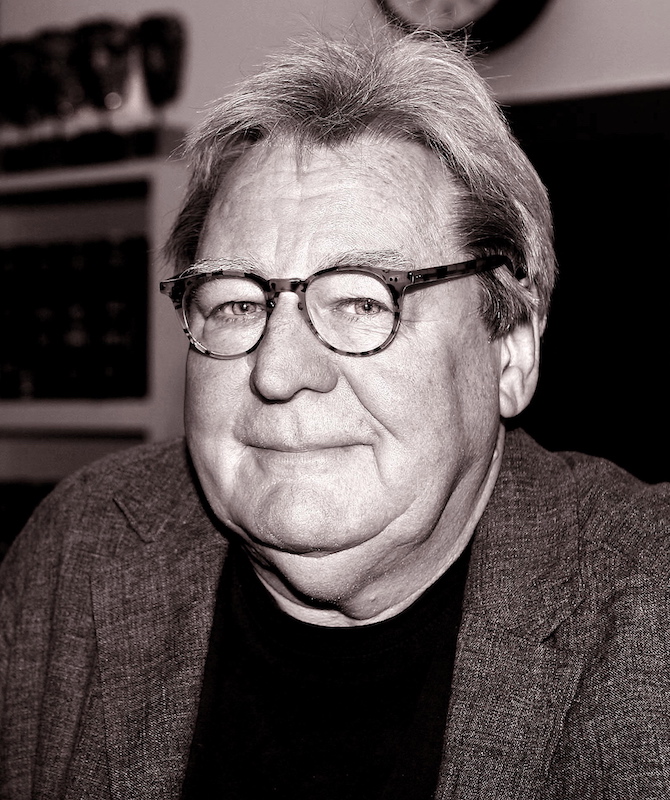
JP: So I’m having a strange summer with him and I just wanted to shout out his work. This September, we’re focusing the Half Mermaid Twitter on this 1971 NYC vibe, which I spoke about last week in regards to Andy Warhol. And even though this is a bit later, Fame is shot in 1979 and I believe it comes out in ’80. It couldn’t be any more authentic New York, gritty, late ’70s era. In talking about how to encapsulate the spirit of that city, Fame does an incredible job. There’s this scene where all of the kids come out to the titular song and dance in the middle of Times Square and jump on taxis. Everyone’s screaming and cursing and it’s just so fun and cool.
And the casting is incredible. I mean, they cast a lot of the actual students from the Performing Arts School. It is incredibly diverse. It is just so beautiful to see all of these different types of bodies dancing and singing and playing instruments and finding joy and expressing themselves. And the story itself is pretty dark. It’s definitely not happy. It’s just very realistic. And even though it’s told in chronological order, it’s extremely impressionistic. It does not follow one narrative throughout.
The editing is very intense. It’s a lot of quick cuts. Your attention is constantly being drawn to something new, and someone else. And so the combination of that effect is impressionistic, and it’s really beautiful. I found it inspirational in terms of what we’re working on, just having a non-traditional narrative structure. So yeah, I wanted to shout out that movie. It was really cool. I had a great time watching it, and recommend it for sure.

NW: Nice. I will put that on the to-do list of films to watch, which is never ending.
JP: Speaking of which, we have started a letterboxd for Half Mermaid which is sort of a social network centered around films. You can add friends there and add movies that you’ve seen, add movies that you want to see, rate movies.. If you’re familiar with Goodreads for books, this is kind of like that for movies.
NW: Yep.
JP: And we’ve started one for Half Mermaid which can show you a lot of the cinematic influences that we have, especially for our next project, Project A███████. So definitely check us out there if you’re interested in following along on our cinematic journey.
NW: Yes. That’s where you can find all of our fun little watch lists.
Godspeed, ye Newsletter
JP: Sweet. So yeah, let’s get into a little bit of what we’ve been working on. I know last time we talked a lot about our research. This time, we’ve done a lot of content marketing and hype development. One of the big things that happened to us this week was that we put out our first edition of the Half Mermaid newsletter which you put together [sign up for it here!]. Do you wanna tell us a little bit about that?
NW: Yeah, I would love to. So this is my first time putting a newsletter together, which was really interesting. The biggest challenge was thinking about what people want in their inboxes. What would be interesting for someone to get on a more exclusive basis? And we did a lot of brainstorming of what we wanted to include in our newsletter. And while we wanted to include stuff about ourselves and our own process, we also wanted to include stuff that inspired or influenced us recently, that we think is relevant or important to share. So for example, I included Dia’s review in the newsletter as my contribution of something that I think is important and that would be cool to share.
We also had the Polygon piece about how, if video games want to be a force for good, they need to learn from sports. Our programmer Connor Carson shared that one. Sam included the procedural generation and information games talk from IEEE computation on games conference. You included the Airplane Mode video game, which is really cool. I mean, it’s like a flight simulation, but you are the passenger, which is especially relevant right now as travel is pretty much non-existent. And we included a couple of others.
So I really liked putting that together. We also have our most recent blog posts in there. We have a couple announcements, one of which you worked on: the Steam event we did this past week. It was so interesting to record. I’ve also never done a process like that before. So I’d love to hear what it took to put that together for this past Wednesday. It was really entertaining to be a part of.
Steamy Streams
JP: Yeah it was. We basically did our first studio live stream this week on Steam. It was in celebration of the Telling Lies anniversary. Telling Lies is the first video game that Half Mermaid put out last August. It was the one year anniversary, and we wanted to do something for the community there. We also wanted to test out streaming – what it means to stream on Steam, what it looks like, what’s the process. That was the goal.

Steam is the most important platform in terms for us as independent publishers and developers right now. It’s where we’re building hype and wishlists. It’s where the community can start growing. So figuring out all of what we can do there is really important.
Steam has this really interesting event announcement system, and there’s all sorts of things that Steam considers events. They’re everything from patch updates, to major game updates, to live streams, to blog posts, sales – basically any news from a developer can be considered a Steam event. You can go in to your partner dashboard if you have a store page on Steam and you can set up the type of event you want. You load it in with artwork, descriptions, and then you set a time for it to go live. One of the interesting event types that we wanted to test out was cross-promotion. So if you have multiple games on the Steam store, you can actually set up cross-promotion events to promote an original event on another Steam store page.
NW: Very meta. Very fitting.
JP: Yeah, very meta. So we set up this Telling Lies first anniversary live stream notification last week as a live stream event on the store page. We also set up cross-promotion events on both the Her Story and Project A███████ Steam pages that served as cross-promotion for the Telling Lies event. We wanted to see what the reach of that was, how our audiences in those different store pages would react to that type of announcement, and what kind of engagement we can have once the live stream actually went live.
So we recorded the live stream in advance, having asked some questions prior via Twitter and Steam to incorporate into that stream. We were told not only anecdotally, but kind of by Steam itself, that the chats in Steam broadcasting tend to be less engaged than they are in a place like say, Twitch or YouTube.
Steam is an incredibly global platform, and as such there’s no prime time to stream. You’re encouraged to loop your stream for several hours so that you catch all the time zones that could be interested in what you have to say. We recorded a four-person conversation, you, myself, Sam as the director, and Connor, our programmer. Sam streamed Telling Lies and we grilled him on some production and design questions. He brought up some questions that we received from the audience as well, which was a very intense set up. I think it took us like an hour and a half to actually hit that record button.
NW: Not to mention the hour we spent the week before setting up. I used to do live stream production for Waypoint (now Vice Games). I was like, “Oh, this will be totally easy. I’ve done this a million times.” Telling Lies doesn’t like to play nice with OBS [a free, open source streaming software]. And turns out when you’re streaming like four cameras and a game with hundreds of video assets and also trying to stream that to us all remotely and also capture us in OBS… it was just…there were a lot of kinks to work out.
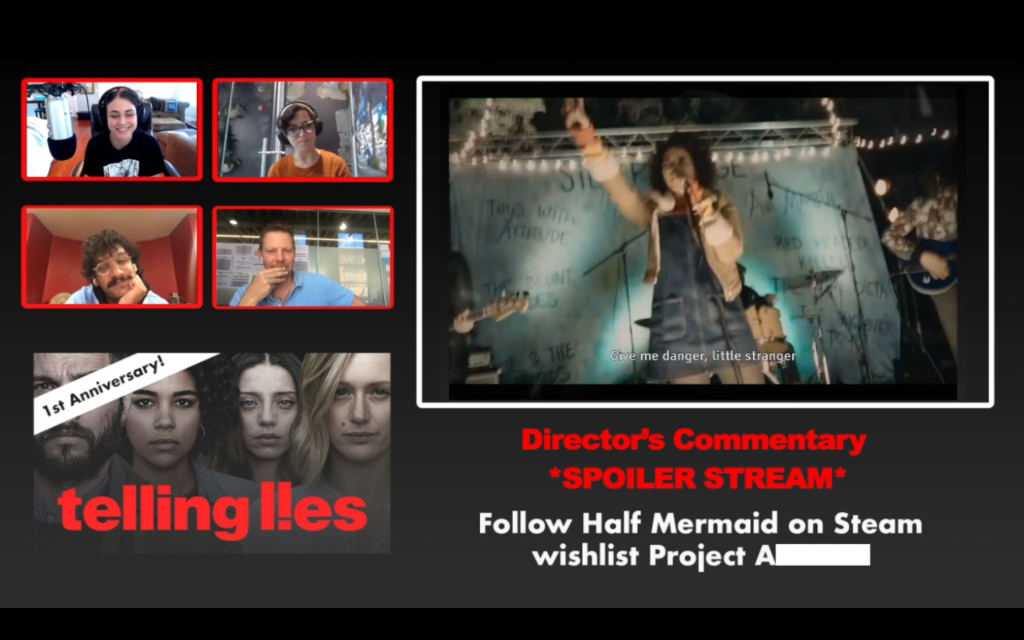
JP: Yeah. I also used to do live stream production when I was a producer at Mashable, but it was in a studio. I had a lot of equipment that made it easy to blend multiple video and audio streams and get what I wanted. So this was a learning experience, for sure, I think for all of us, but it was a great one. We didn’t make it to the Steam front page, which was our dream goal, but hopefully we’ll get there one day.
How we can add interesting value to the discussion of what’s going on in the games industry in the intersection of games and film?
-Jeff on wtf we’re doing
So, yeah, we’ll see. It was a really cool experiment. I think just generally we’ve been doing a lot of those types of content experiments. From the newsletter that you just described, to the live stream, to updating our Steam page with some more reveals on our project description, to Sam really taking over our Twitter and showing a lot of the cinematic inspiration for what we’re working on, this has definitely been a month of trying to see what people respond to. How we can add interesting value to the discussion of what’s going on in the games industry in the intersection of games and film? If anyone out there is listening to this and has any feedback for us, we will gladly take it. We’re definitely just experimenting out there.
Is there anything else that you wanna bring up today, in our production blog?
The Game Devs of Color Expo 2020

NW: I did wanna shout-out another inclusion in our newsletter, something that we’re going to be talking a lot about over the next couple of weeks: the Game Devs of Color Expo. It’s being held entirely online this year, on September 19th and 20th, and we’re so honored to be sponsoring the event as community sponsors. It’s my first virtual conference that I will be involved at this level with. We’re going to be able to have one-on-one meetings with people, if any attendees are interested. There are going to be a ton of virtual talks that we’ll be sitting in the audience for, and I’m really excited to hear. You can follow updates on the GDoCExpo Twitter. We’ll be retweeting a bunch of that and boosting their stuff over the next couple of weeks.
JP: Yeah, I’m so excited about it. I mean, one of my good friends from the NYU Game Center, Brian Chung, is a big part of the GDoCExpo and how I originally got exposed to it. I’m so happy to hear all the incredible panels that they have, and meet anyone who’d like to meet us and really, I think, be excited to be a part of an event that’s centering voices that desperately deserve to be heard in our industry. And the fact that they’re making space in such an accessible way online, you can join in from anywhere. I think tickets for attendees are only $10, so it’s pretty accessible. And I’m really excited that it’s happening. It’s gonna be really cool.
And if you’re listening to this after September 19th or 20th, the great thing about GDoCExpo is that their Twitter is constantly putting out really cool related information to the causes and the voices that they’re supporting. So even if you can’t make the Expo this year, definitely check them out. Follow them. Follow the organizers and stay in the loop for what they’re doing, because it’s really great and cool work.
NW: Agreed. It’s one of my favorites. Out of all the cons I’ve been to, GDoC has the fucking best energy. It’s one of my favorite experiences ever. And I’m excited that they’re putting this on virtually so that even more people can experience it for themselves. So if you’re looking to buy tickets, go to gamedevsofcolorexpo.com. Like Jeff said, they’re available for $10. There’s a $5 low-income option, or if you can’t afford to go, there is an option for you as well. So please do check that out. We’re very excited.
JP: Sweet.
NW: Can’t wait.
JP: Yeah, so I think that’s all that we wanted to really talk about in this blog. I’m really excited to keep doing these. I just wanted to mention to anyone out there: if you’re not following Half Mermaid already on Twitter or Steam, I recommend doing that. You can follow me online @thebeff, that’s Jeff with a B, instead of a J, pretty much anywhere. Natalie?
NW: You can follow me on Twitter @nataliewatson, and you can email us for any comments, questions, feedback at [email protected]. We encourage you all to reach out to us; we’d love to hear from you. And we’re excited for the next one. So stay tuned.
JP: Alright.
NW: Thanks everyone.
JP: See you later.
NW: Bye bye.
